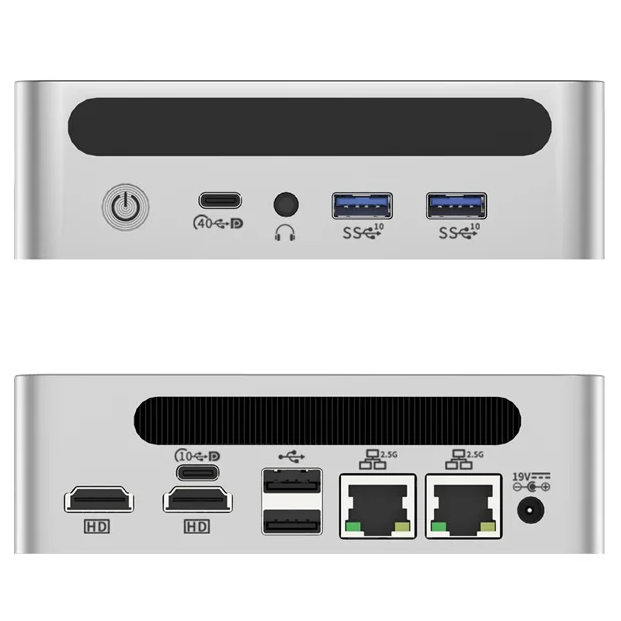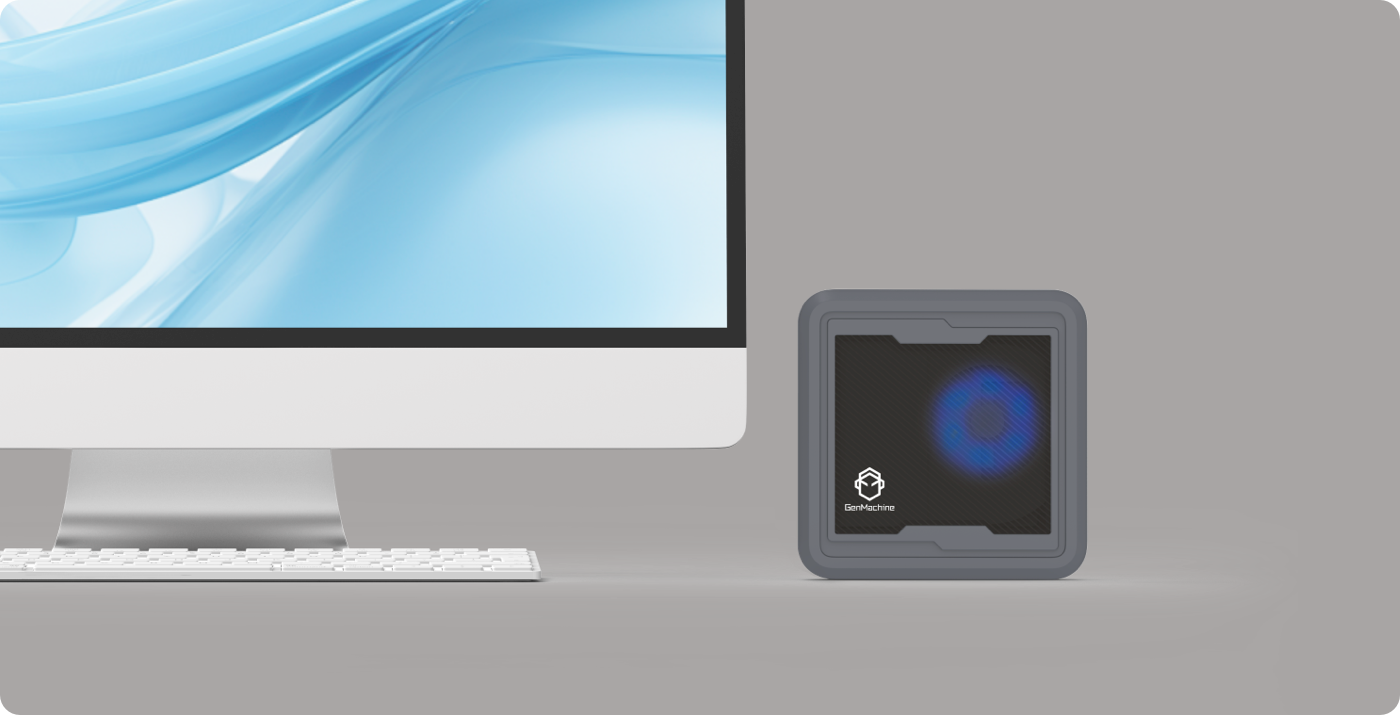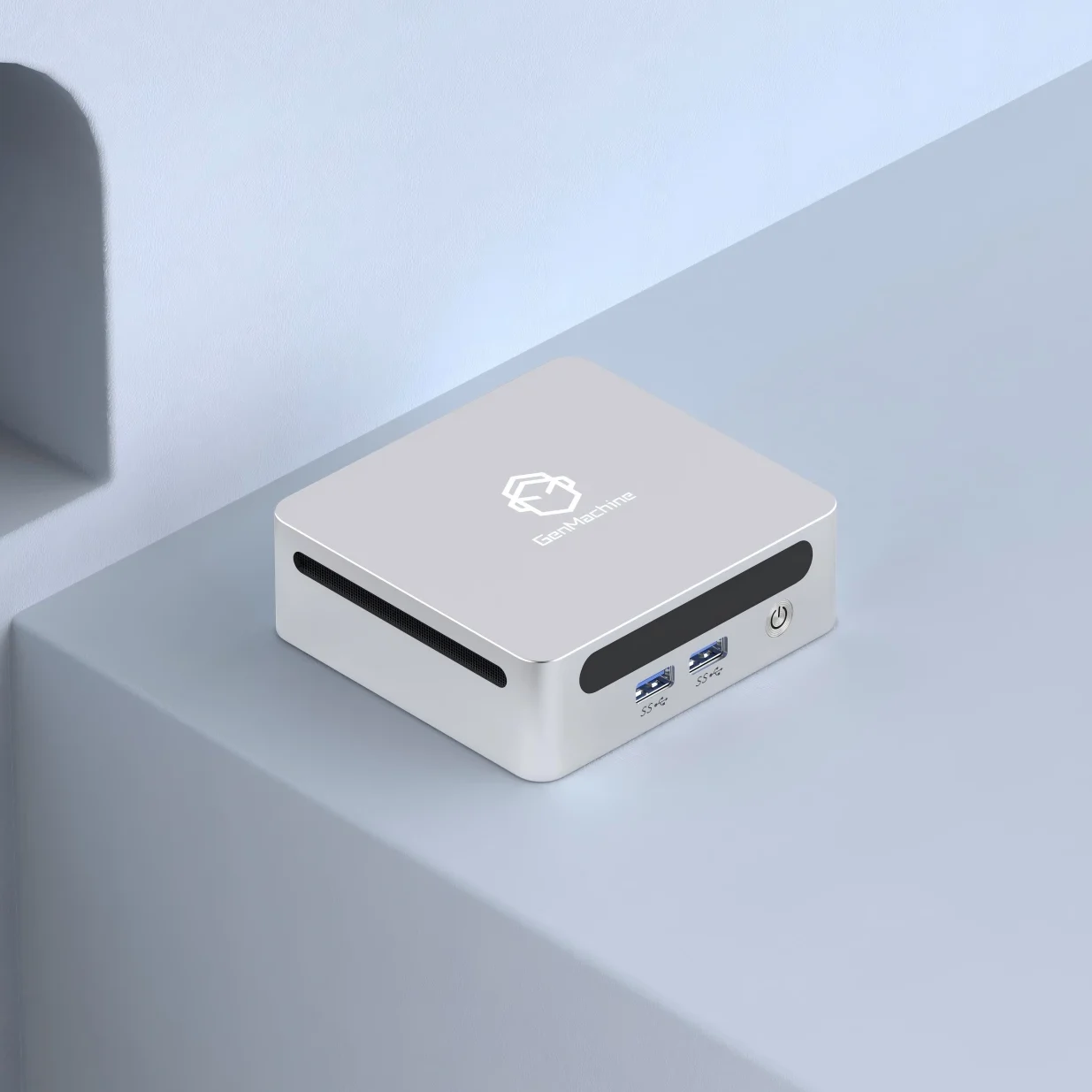Table of Contents
I. Introduction: Redefining the Possibility of Small Computing Devices
In the long-standing history of computer hardware development, the core proposition has consistently been size versus performance. The mainstream understanding has always pointed to requiring a large chassis size and complicated cooling system as necessary trade-offs to achieve powerful computing performance. However, advanced semiconductor technology with architectural design innovation is now overturning that traditional cognition. Enter the AMD Ryzen Mini PC, which makes high-performance computing devices officially enter a new era of miniaturization and integration.
II. Miniaturization Breakthrough of Zen Architecture: Redefining Performance Density
1. The Subtlety of Architecture Design
The development of the Zen architecture into an efficient minified archetype is the ultimate result of numerous years of technical engineering accumulation by AMD. Zen architecture was not just taken and compacted; it was fundamentally redone for minified products. Some of the most critical innovations happen to be better instruction scheduling and a more efficient prefetch mechanism that lets the processor take the most possible advantage of its instruction throughput efficiency in a very modest power budget. In the Zen 3 architecture, AMD uses a unified complex design (CCX) and shares 32 MB of L3 cache among 8 cores. This approach drastically reduces the latency of inter-core communications and is crucial to making multi-threaded performance better.
2. Revolutionary Progress Brought by Process Technology
Process technology advancement plays a key role in the leap in performance of Mini PCs. AMD leaped from the 12 nm process to the 7 nm process (such as Ryzen 7 5800U) and then even to the latest 4 nm process (such as Ryzen 7 7840HS). There is a substantial improvement in performance and energy efficiency at each step. The 7 nm process has a transistor density of about 170 million per square millimeter, and the 4 nm process brings this number to a higher level. Therefore, the direct benefit of this process advancement is that more transistors can be integrated in the same chip area, or alternatively, the chip area could be greatly reduced while keeping the same number of transistors.
3. Differentiated Layout of Product Lines
AMD is putting an entire product line layout for the AMD Ryzen Mini PC market, which fulfills diverse needs of customer workloads and pricing. From entry-level Ryzen 3 (like R3-7330U, 4 cores and 8 threads) rising to high-end Ryzen 9 (like R9-7940HS, 8 cores and 16 threads, maximum turbo frequency 5.2 GHz), such differentiated layouts enable customers to find the right product according to their needs for the target workload profile. For regular office and light entertainment users, the Ryzen 5 series (like R5-5600U AMD mini PC, 6 cores and 12 threads, maximum turbo frequency 4.2 GHz) is very aggressive from the cost perspective. For professional users and performance seekers, the Ryzen 7 series brings more powerful computing power. Ryzen 7 5800U’s 8-core 16-thread design (base frequency 1.9 GHz, maximum turbo frequency 4.4 GHz), combined with 16 MB of L3 cache, enables it to easily handle heavy tasks such as video editing and 3D rendering. In the SPECrate2017 integer test, the 5800U’s score is about 35% higher than the 5600U, and this performance gap will be more obvious in actual applications. This fine product division ensures that users with different needs can find the most suitable Mini PC solution for themselves. Read this article about Ryzen 5 vs Ryzen 7: Mini PC Processor Selection Comparison, You can learn more details about comparing Ryzen 5 and Ryzen 7.
III. Graphics Processing Capabilities: Performance Beyond Expectations


1. The Evolution of Integrated Graphics Cards
AMD’s continued investment in integrated graphics technology has brought the graphics processing capabilities of Ryzen Mini PC to an unprecedented level. From the early Vega architecture (such as Vega 8 equipped with R7-5800U, frequency 2000 MHz) to the latest RDNA 2 architecture (such as Radeon 780M equipped with R7-7840HS, frequency 2700 MHz), each generation of products has brought significant performance improvements. The RDNA 2 architecture introduces a number of innovative technologies, such as Infinity Cache and Smart Access Memory, which greatly improve the performance of integrated graphics.
2. Support for Professional Application Scenarios
For professional users, graphics processing capabilities are not only reflected in entertainment but more importantly in the support of various professional applications. Ryzen Mini PC is also impressive in this regard. In image processing software such as Photoshop, the system can maintain a smooth operating experience even when processing multiple layers of high-resolution images. When batch processing a large number of RAW format photos, thanks to the multi-core performance of the processor and the acceleration capability of the graphics card (such as the Radeon 680M of the R7-7735U, with a frequency of 2200 MHz), the efficiency of the entire workflow is significantly improved.
In the field of 3D modeling and rendering, AMD Ryzen Mini PC also demonstrates capabilities beyond expectations. When using Blender to render scenes of medium complexity, although the speed may not be as fast as that of high-end desktop workstations, it is completely within an acceptable range. More importantly, these small devices support mainstream rendering engines and APIs, which can seamlessly connect professional workflows. For professionals working on the go, this solution that combines high performance and professionalism in a compact size is undoubtedly very attractive.
IV. Heat Dissipation and Power Consumption Management: Key Technologies for Miniaturized Devices

1. Innovative Heat Dissipation Solutions
Heat dissipation has always been one of the biggest challenges facing miniaturized devices. AMD and its partners have developed a variety of innovative heat dissipation solutions to ensure that AMD Ryzen Mini PC can maintain stable performance under long-term high loads. The most representative of these is the heat dissipation system using heat sink technology. This technology uses the efficient thermal conductivity of phase change materials to quickly disperse the heat generated by the processor to the entire heat dissipation area, and then discharges it out of the machine through carefully designed air ducts and silent fans.
Actual tests show that even under continuous high-load working conditions (such as R7-6800H running at 45 W TDP), Ryzen Mini PCs equipped with this heat dissipation system can keep the core temperature within a reasonable range. More importantly, these heat dissipation solutions maintain extremely low noise levels while ensuring heat dissipation efficiency. In a standard office environment, the operating noise of the equipment is often lower than the ambient noise and is almost unnoticeable to users. This silent feature makes the AMD Ryzen Mini PC particularly suitable for office and home use scenarios that require a quiet environment. Want to know more about AMD mini PC’s silent cooling technology?
2. Intelligent Power Management System
In addition to heat dissipation technology, intelligent power management is also the key to ensuring the stable performance of the AMD Ryzen Mini PC. AMD’s Precision Boost 2 technology can monitor the processor’s load and temperature status in real time and dynamically adjust the operating frequency and voltage. This sophisticated power management enables the processor to always maintain the best performance-to-power ratio under different load conditions.
In actual use, the benefits of this technology are obvious. When processing lightweight tasks, the system automatically reduces the operating frequency to reduce power consumption and heat; when heavy-load tasks are detected, the performance will be quickly improved to meet the needs. This intelligent adjustment not only extends the service life of the device but also significantly reduces energy consumption. Test data shows that in typical office use scenarios, the power consumption of a AMD Ryzen Mini PC equipped with a Ryzen 7 5800U (TDP 15 W) processor is often no more than 30 watts, which is more than 70% energy-saving compared to traditional desktop computers.
V. Expandability and Connectivity: Big Things in a Small Package



1. Rich Interface Configuration
Despite its compact size (Ren Pro is only 4×13×12.6 cm), Ryzen Mini PCs make no compromises in terms of interface configuration. High-end models are usually equipped with multiple USB4 interfaces (such as USB-C 4.0 in the Ren series), supporting data transfer speeds of up to 40 Gbps. In addition, the configuration of HDMI 2.1 and DisplayPort 1.4 interfaces enables these small devices to easily drive multiple 4K monitors. This expandability is particularly important for professionals who need a multi-screen work environment.
In an actual office environment, users can connect multiple peripherals at the same time, including high-speed storage devices, high-resolution displays, professional audio equipment, etc., without encountering bandwidth bottlenecks. This powerful connectivity enables Ryzen Mini PCs to adapt to a variety of complex work scenarios, providing excellent support from financial transactions to software development, from video editing to graphic design.
2. Storage and Memory Expandability
In addition to external interfaces, AMD Ryzen Mini PCs are also thoughtful in terms of internal expandability. Most models support dual-channel memory configuration (such as the Ren series supports DDR4 3200 MHz dual-channel up to 64 GB), providing sufficient support for memory-intensive applications. In terms of storage, in addition to the standard NVMe SSD slot, many models also provide an additional 2.5-inch hard disk slot (such as the Ren series supports dual M.2 2280 slots), which is convenient for users to expand storage capacity.
This expansion flexibility ensures that users can upgrade the device at any time according to their needs without replacing the entire machine. For users who pursue long-term use, this scalability design greatly improves the use value and life cycle of the product. From a practical use perspective, the AMD Ryzen Mini PC equipped with a high-speed NVMe SSD has almost no difference in system response speed and application loading time from traditional high-end desktops, further blurring the performance boundary between small devices and desktops.
VI. Analysis of Actual Application Scenarios


1. Ideal Choice for Mobile Office
AMD Ryzen Mini PC (for example, Ren series, 500 g) is an ideal solution for traveling professionals. Easily accommodated in a briefcase or suitcase, this ultra-light, ultra-small system delivers ultra-performance that ensures all office applications run without any hiccups. Be it large spreadsheet processing, web video conferencing, or professional design software running on it, these diminutive desktop devices can offer adequate performance. For those who have mobile processing coding development needs, the ability of a mini PC to code on multiple screens is very attractive.
2. Home Entertainment Center
The AMD Ryzen Mini PC is also good at home entertainment. It offers powerful media decoding and plays 4K and even 8K content without a glitch, thanks to its favorable conditions using remote control and connecting to modern smart TVs via HDMI 2.1. This enables users to savor the robust visual presentation ushered in by cutting-edge display technologies, including High Dynamic Range (HDR) and Variable Refresh Rate (VRR).
In a home media center, a Ryzen Mini PC is particularly welcome for its low noise and low heat properties. It can keep working properly even when used continuously for an extended period without disturbing daily life for any family member. Moreover, it comes with diverse connectivity capabilities to attach a wide variety of peripherals—joysticks, sound systems, and the like—so that users can create a complete home entertainment system. At the same time, mini PCs also support gaming. Let’s find out whether Ryzen mini PCs can drive 3A games?
3. Professional Creative Work
For digital content creators, the Ryzen Mini PCs represent a powerful mobile creation platform. Professional applications like video editing, music production, and graphic design run smoothly on these small devices. Although extremely heavy-duty tasks might still require workstation-level equipment, for most creative work performed, the performance provided by the Ryzen Mini PCs, such as the Yi series equipped with R7-7840HS AMD Mini PC, is more than enough.
VII. Technology Prospects and Market Outlook
1. Continuously Evolving Technology Route
From the perspective of technological development, AMD’s Zen architecture is still evolving. The upcoming Zen 4 architecture is expected to bring higher IPC and more advanced process technology, indicating that the performance of Mini PCs will be significantly improved in the future. At the same time, the integrated graphics card of the RDNA 3 architecture will further narrow the performance gap with the discrete graphics card, allowing small devices to cope with more demanding graphics processing tasks.
The next generation of processors will introduce a more advanced voltage-frequency adjustment mechanism in power management, which is expected to reduce energy consumption even more while maintaining performance. These technological strides will keep widening the application scope of Mini PCs, enabling them to execute more tasks that typically demand desktops or workstations.
2. Diversified Market Application Prospects
From the perspective of market application, Mini PCs display boundless potential in various fields. In education, their small size and low power consumption make them more conducive to use in classrooms.
For the enterprise market, Mini PCs can squeeze every bit of performance power and are very easily manageable. Thus, they have all the traits to evolve as the perfect office companion. In the professional field, Mini PCs can extract just the amount of performance needed and are portable enough to fit well into various field professional applications that are always on the go.
VIII. Conclusion: The Future of Miniaturized Computing Has Arrived
AMD Ryzen Mini PCs begin a new era of high-performance computing device miniaturization. With the exquisite design of the Zen architecture, advanced process technology applied, innovative heat dissipation and power management technology applied, these devices, with one-tenth the volume of a traditional desktop, can already provide performance comparable to standard desktops. From daily office use to professional creation, from home entertainment to enterprise applications, the AMD Ryzen Mini PC version is changing people’s habits and perceptions of computing devices for diverse fields and various other usages.
We can predict that as technology grows, so will the performance and application scope of Mini PCs. Most users will be fine with such small yet powerful systems, and large desktops will find space only in some specific professional fields. This will be the future of computing. AMD Ryzen Mini PCs are leading this revolution in computing form, redefining what is possible and what is impossible.





